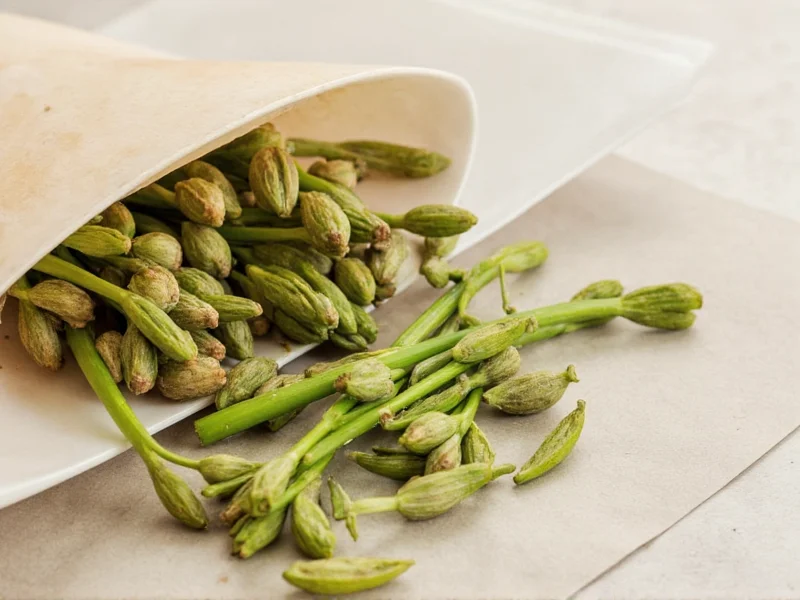Understanding what's cardamom requires exploring its botanical origins and culinary significance. This ancient spice has been prized for over 4,000 years, featuring prominently in Ayurvedic medicine and traditional cooking throughout South Asia, the Middle East, and Scandinavia. Cardamom belongs to the same plant family as ginger and turmeric, with its aromatic properties concentrated in the tiny black seeds contained within triangular seed pods.
| Variety | Appearance | Flavor Profile | Primary Uses |
|---|---|---|---|
| Green Cardamom | Small green pods (1 cm) | Sweet, floral, citrusy | Baked goods, chai, rice dishes |
| Black Cardamom | Larger brown-black pods (2-3 cm) | Smoky, camphorous, earthy | Curries, stews, meat dishes |
| Cardamom Seeds | Small black seeds | Intense, concentrated flavor | Ground spice applications |
Cardamom Varieties Explained
When exploring what is cardamom spice, understanding the key varieties is essential. Green cardamom represents the most common variety worldwide, featuring delicate triangular pods that contain aromatic black seeds. This variety delivers a bright, complex flavor with citrus and floral notes that enhances both sweet and savory applications. Black cardamom, sometimes called hill cardamom, offers a dramatically different profile with its larger, smokier pods that impart earthy, camphor-like flavors ideal for hearty dishes.
The difference between green and black cardamom extends beyond appearance to their cultivation and harvesting methods. Green cardamom pods are harvested before maturity and dried slowly to preserve their vibrant color and delicate flavor. Black cardamom undergoes open-flame drying, which creates its distinctive smoky character. This processing difference explains why substituting one for the other significantly alters dish outcomes.
Culinary Applications Worldwide
Learning how to use cardamom in cooking reveals its remarkable versatility across global cuisines. In Scandinavian baking, green cardamom features prominently in sweet breads like Swedish kardemummabullar and Finnish pulla. Middle Eastern cuisine incorporates it into coffee blends and rice dishes, while Indian cooking uses both varieties extensively—green in desserts and biryanis, black in robust meat curries.
Professional chefs recommend toasting whole pods before grinding to maximize flavor release. For optimal results when using cardamom in recipes, crush the pods to extract seeds just before incorporation. The spice's essential oils degrade quickly after grinding, so whole pod storage maintains freshness significantly longer than pre-ground alternatives.
Health Considerations and Traditional Uses
Traditional medicine systems have valued cardamom for centuries, particularly for digestive support. While modern research continues investigating cardamom health benefits, preliminary studies suggest potential antioxidant properties and digestive aid capabilities. Many cultures incorporate it into post-meal rituals to freshen breath and support digestion.
It's important to distinguish between traditional uses and scientifically verified benefits. Cardamom shows promise in laboratory studies, but conclusive human clinical evidence remains limited. As with any dietary component, moderation represents the healthiest approach when incorporating this spice into your regular diet.
Selection, Storage, and Substitution
When selecting cardamom, prioritize whole pods over pre-ground spice for maximum flavor retention. High-quality green cardamom pods should feel heavy for their size with intact husks that snap crisply when bent. Store pods in airtight containers away from light and heat to preserve their volatile oils for up to one year.
Understanding cardamom substitute options proves valuable when this spice isn't available. For green cardamom, a blend of equal parts cinnamon, nutmeg, and cloves offers the closest approximation. Black cardamom substitutions work best with a combination of smoked paprika and star anise. Remember that no substitute perfectly replicates cardamom's unique flavor profile, making it worth seeking the authentic spice for traditional recipes.
Frequently Asked Questions
What's the difference between cardamom pods and seeds?
Cardamom pods contain the valuable seeds—typically 8-16 small black seeds per pod. The entire pod can be used in cooking, but many recipes call for removing the seeds and discarding the fibrous husk. The seeds contain the most concentrated flavor, while the pod contributes more subtle notes. For optimal flavor extraction, lightly crush the pods before use.
Can I substitute ground cardamom for whole pods?
Yes, but with flavor considerations. As a general rule, 10 whole cardamom pods equal approximately 1½ teaspoons of ground cardamom. However, pre-ground cardamom loses its volatile oils more quickly, resulting in less vibrant flavor. For best results, grind your own seeds from whole pods just before use.
Is cardamom safe for daily consumption?
Cardamom is generally recognized as safe when consumed in typical culinary amounts. Most people safely enjoy 1-3 pods daily in cooking or beverages. However, extremely high consumption (more than 10-15 pods daily) may cause digestive discomfort in sensitive individuals. Those with gallstones should consult a healthcare provider before consuming large amounts.
Why is cardamom so expensive compared to other spices?
Cardamom's high cost stems from labor-intensive harvesting requirements. The pods must be hand-picked when only partially ripe, requiring multiple passes through plantations as pods mature at different rates. Additionally, cardamom grows only in specific tropical climates with precise elevation and rainfall requirements, limiting production regions. The delicate nature of the spice also necessitates careful processing to preserve flavor.











 浙公网安备
33010002000092号
浙公网安备
33010002000092号 浙B2-20120091-4
浙B2-20120091-4